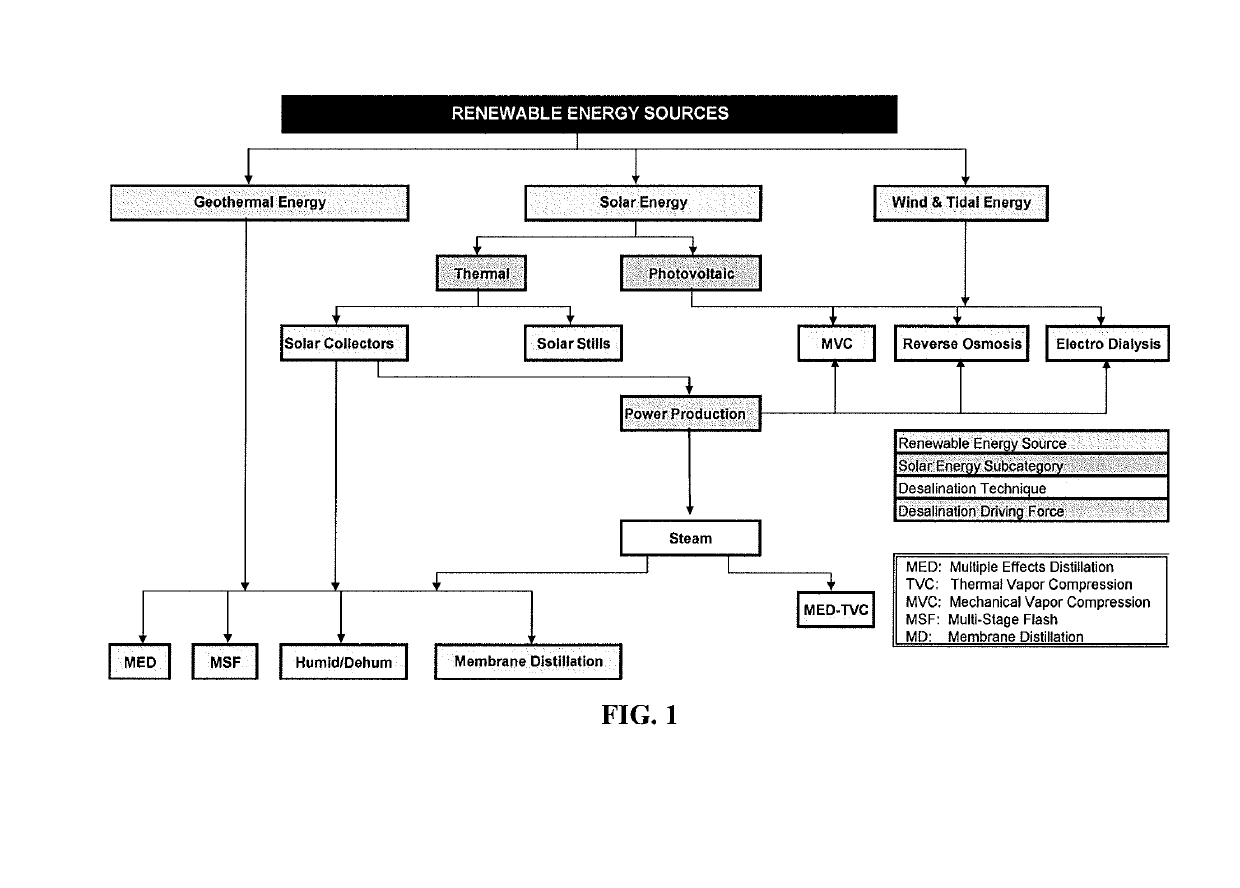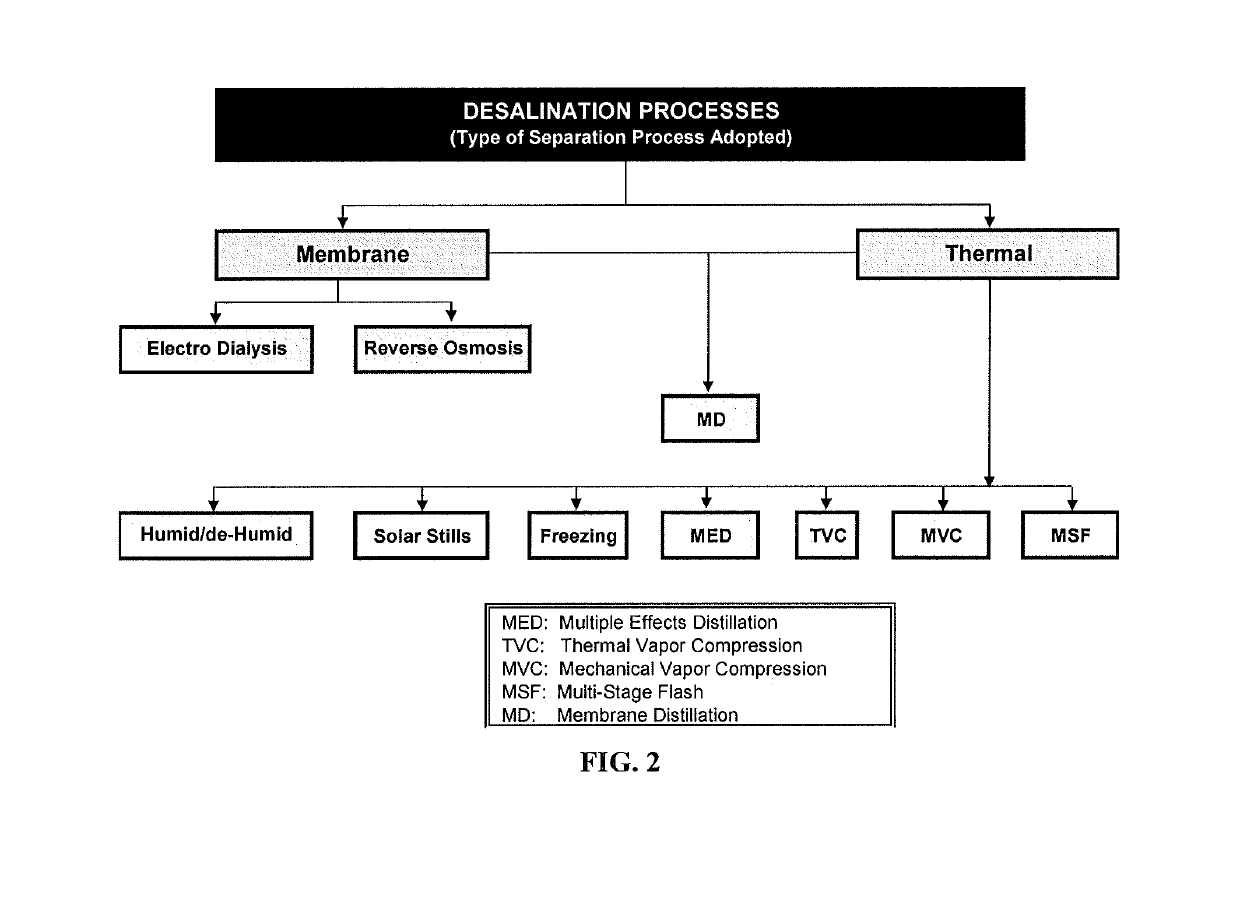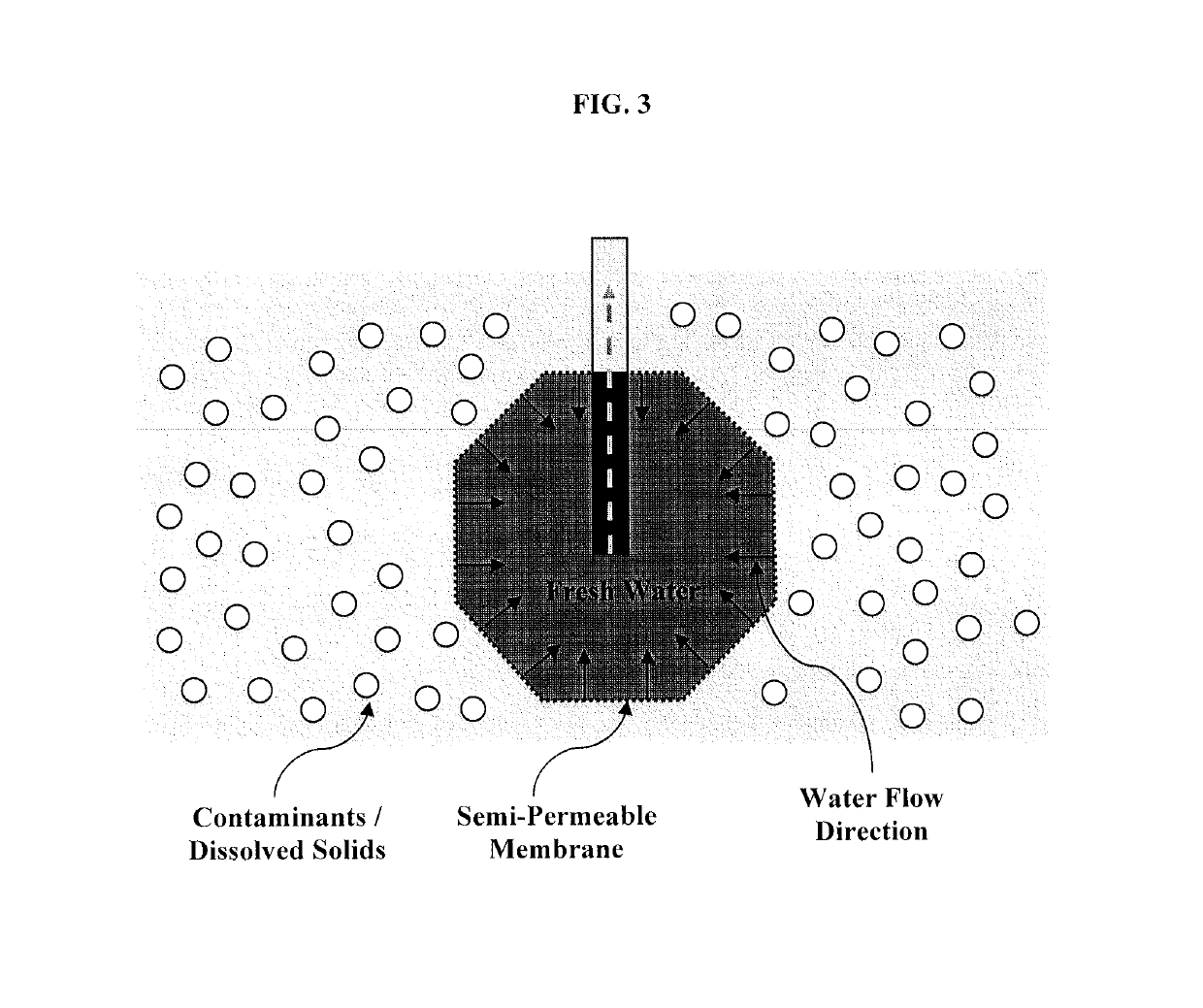Deep ocean desalination system and methods of using same to produce potable water
a technology of desalination system and deep ocean, applied in membrane technology, reverse osmosis, membranes, etc., can solve the problems of inability to use, damage or contaminate the fresh water infrastructure normally relied on, and the contamination of fresh water sources is growing
- Summary
- Abstract
- Description
- Claims
- Application Information
AI Technical Summary
Benefits of technology
Problems solved by technology
Method used
Image
Examples
Embodiment Construction
[0023]The present invention relates to systems designed for mobile or stationary deep ocean desalination. In addition, the present invention relates to methods of desalinating deep ocean water using the systems of the invention. In particular, the present invention applies the general concept of membrane technology as a basis for fresh water product separation from the resource seawater through a novel and low-energy alternative. In particular, the present invention incorporates hydrostatic pressure to reverse osmosis the ambient seawater at deployed depth through a membrane. In addition, the system of the invention includes a flexible riser / submersible pump system to produce a “well” effect and continuous fresh water production with limited energy requirements.
[0024]Until recently, the process most often used in desalination operations was a thermal separation process that involves the boiling of water at less than atmospheric pressure (and, accordingly, a lower temperature). Howev...
PUM
| Property | Measurement | Unit |
|---|---|---|
| depth | aaaaa | aaaaa |
| depth | aaaaa | aaaaa |
| depth | aaaaa | aaaaa |
Abstract
Description
Claims
Application Information
 Login to View More
Login to View More - R&D
- Intellectual Property
- Life Sciences
- Materials
- Tech Scout
- Unparalleled Data Quality
- Higher Quality Content
- 60% Fewer Hallucinations
Browse by: Latest US Patents, China's latest patents, Technical Efficacy Thesaurus, Application Domain, Technology Topic, Popular Technical Reports.
© 2025 PatSnap. All rights reserved.Legal|Privacy policy|Modern Slavery Act Transparency Statement|Sitemap|About US| Contact US: help@patsnap.com



